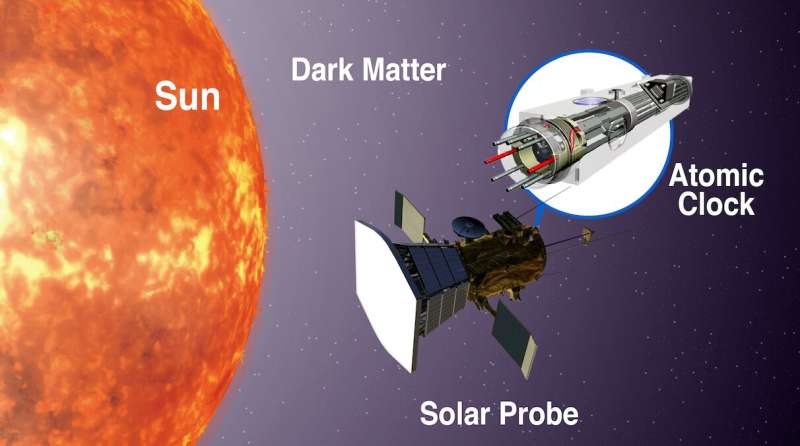Cosmic atomic clocks could help reveal the nature of dark matter
- December 6, 2022
- 0
Studying the atomic clock aboard a spacecraft orbiting Mercury and very close to the Sun may hold the key to unraveling the nature of dark matter, new research
Studying the atomic clock aboard a spacecraft orbiting Mercury and very close to the Sun may hold the key to unraveling the nature of dark matter, new research

Studying the atomic clock aboard a spacecraft orbiting Mercury and very close to the Sun may hold the key to unraveling the nature of dark matter, new research suggests. Nature Astronomy. Dark matter makes up more than 80% of the mass in the universe, but despite decades of experimental efforts, it has yet to be detected on Earth. An important component of these investigations is the assumption about the local dark matter density, which determines the number of dark matter particles passing through the detector at any given time, and thus the experimental sensitivity.
In some models, this density may be much higher than generally assumed, and dark matter may become denser in some regions than in others. One of the important types of experimental searches is searches using atoms or nuclei, as they achieve incredible sensitivity to dark matter signals. This is possible in part because when dark matter particles have very little mass, they cause fluctuations in nature’s constants. These fluctuations, such as the mass of an electron or the strength of the electromagnetic force, change the transition energies of atoms and nuclei in a predictable way.
An international research team, consisting of Kavli IPMU Institute for the Physics and Mathematics of the Universe (Kavli IPMU) project researcher Joshua Eby, University of California, Irvine, PhD student Yu-Dai Tsai, and University of Delaware professor Marianne S. Safronova, explored the potential in these oscillating signals. They argued that in a particular region of the solar system between Mercury’s orbit and the Sun, the density of dark matter could be extremely high, implying an extraordinary sensitivity to oscillating signals.
These signals can be picked up by atomic clocks that work by carefully measuring the frequency of photons emitted during transitions of various states in atoms. Ultralight dark matter near the clock experiment can alter these frequencies because oscillations of dark matter slightly increase and decrease the photon’s energy.
“The more dark matter around the experiment, the greater these fluctuations, so the local dark matter density is of great importance when analyzing the signal,” Eby said.
While the density of dark matter near the Sun isn’t exactly known, researchers say even relatively low-sensitivity searches can provide important information. The density of dark matter in the solar system is limited only by information about the orbits of the planets. The area between the Sun and Mercury, the closest planet to the Sun, has almost no restrictions. Thus, measurements made in spacecraft can quickly reveal the world’s leading dark matter constraint in these models.
The technology to test your theories already exists. Eby says NASA’s Parker Solar Probe, which has been operating with a shield since 2018, has come closer to the Sun than any man-made vehicle in history, and is currently operating in orbit around Mercury and plans to get even closer to the sun. within a year. Atomic clocks in space are already well-motivated for many reasons beyond the search for dark matter.
“Long-distance space missions, including possible future missions to Mars, will require the extraordinary timekeeping provided by atomic clocks in space. It is shielded and has an orbit very similar to the Parker Solar Probe, but a future mission with an atomic clock is possible. The equipment may be sufficient to conduct a search,” he said.
Source: Port Altele
John Wilkes is a seasoned journalist and author at Div Bracket. He specializes in covering trending news across a wide range of topics, from politics to entertainment and everything in between.